News:
Jewish ghosts linger as German households still make use of stolen heirlooms
By Dina Gold
Launching a new, unique, confidential study, Dr. Carolin Lange is trying to find out if and why Germans continue to hold on to everyday items taken from Jews during the Holocaust
MUNICH, Germany — Senta Herkle’s story is about a spoon. It’s no ordinary spoon, but a gift to Herkle’s great-grandmother, Marie, from her then-neighbor, Erna Kohn.
“The whole history of Nazi Germany and the Jewish people has always touched me, and I really do tell this story to everyone who is interested because I think we have to share the memory,” said Herkle, who lives in Stuttgart.
“Just a few days before [her wartime] deportation, Mrs. Kohn gave the spoon as a memory, as a token,” Herkle said.
Why only one spoon? “Maybe it was the last thing she had,” said Herkle.
That silver-plated spoon has been passed down through the generations from mother to daughter and now has been given to fourth-generation Herkle by her own mother, Jeanette. Herkle recalls asking her mother about the spoon throughout her childhood.
“It was always lying on that mat. I asked my mother about it every time I was in front of the showcase it sits in,” Herkle said.
The mat Herkle was referring to is a small piece of crochet made by Marie’s daughter Isabella, and the spoon which rests on it has been lovingly cared for and never used. Today it lies in a glass cabinet in Herkle’s home.
Marie and Erna were close neighbors living on the only street in the tiny village of Rosshaupt, about 50 kilometers (32 miles) from Marienbad, in Bohemia, in what was then Czechoslovakia. Marie lived at number 116 and the Kohns at number 141. Their lives had been closely intertwined.
But the Kohns were Jews. In 1938, Erna’s husband Karl, a merchant in the village, emigrated to London while Erna and their two daughters, in their late teens or early 20s, stayed in Rosshaupt. Perhaps they were planning on joining him in London — no one knows. But when war broke out they were trapped and, in due course, all three were deported and murdered. The spoon represents the last token of the friendship between the two families.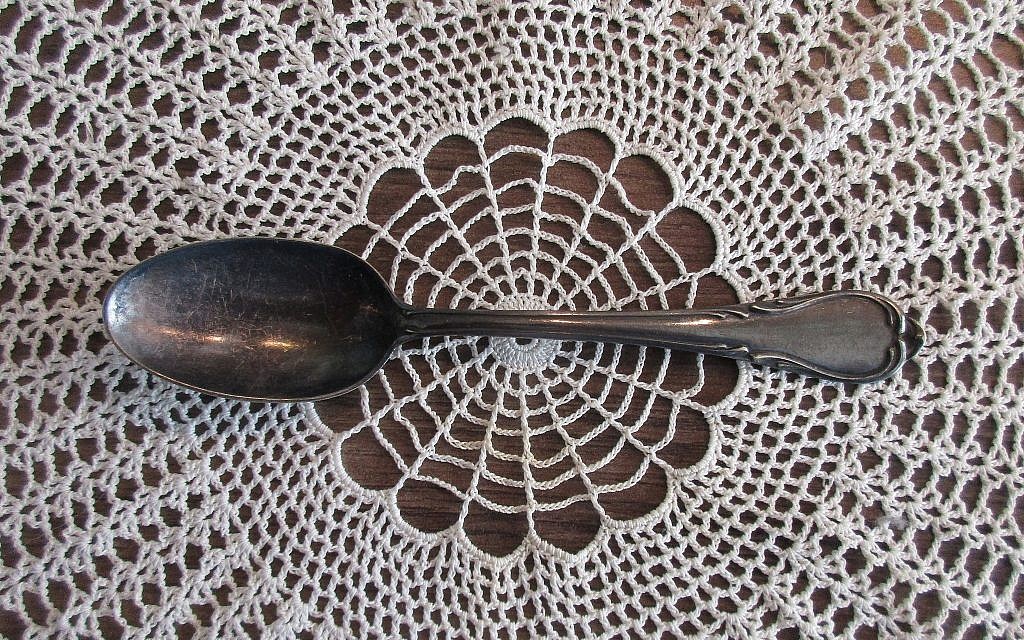
A single spoon handed down to Senta Herkle though the generations. The spoon was a keepsake to Herkle’s great-grandmother from her Jewish neighbor Erna Kohn, before Kohn was deported by the Nazis and murdered in the death camps
In 1945, as ethnic Germans in Sudetenland, Marie and her family fled to Öttingen in Bavaria. She took with her three precious possessions: her sewing machine, a porcelain Madonna bought in the 19th century at Lourdes by her own mother (Herkle’s great-great-grandmother) and the spoon given to her by Erna Kohn.
Isabella never forgot her childhood friends. “My grandmother knew the Kohn family. She was at school with the two girls, she was the same age as them. They were friends. She mourned them, when she told the story she always had tears in her eyes,” Herkle said.
She also carries that sorrow. “I was always very sad about the daughters, they were so young,” she said.
Skeletons in the closet
Today, thousands of homes all across Germany are thought to contain the private possessions of former Jewish citizens.
How do people cope emotionally with the knowledge of owning items which once belonged to their Jewish neighbors who, during the years 1933-45 either fled the country or were deported and murdered?
That’s a question Dr. Carolin Lange will ask in the “Heirlooms and Family Histories under the Microscope” project, which starts on May 9 and lasts through September 12.
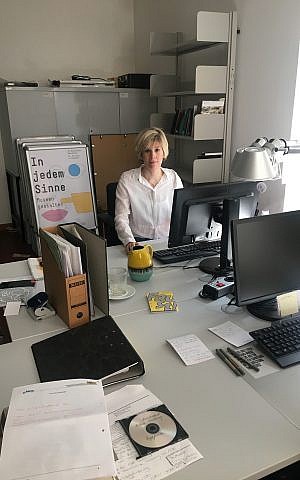
The Münchner Stadtmuseum (Munich City Museum) is holding an exhibition from April 27 to September 23 entitled “Ehem jüdischer Besitz – Erwerbungen des Münchner Stadtmuseums im Nationalsozialismus” (Former Jewish-Owned Property — Acquisitions of the Munich City Museum during National Socialism), showcasing some of the artwork it acquired during the Nazi era from former Jewish owners.
At the entrance there are a sign, flyers, brochures and assorted literature asking people if they have any objects acquired during the Nazi era and whether they would be willing to share their thoughts, feelings and reminisces of the stories surrounding their acquisition with Lange. Anyone willing to take part will be ushered to a private booth where they will be able to speak confidentially to her.
What were the stories people told one another about how they came to possess such items? What has the psychological impact on them and their children, grandchildren and great-grandchildren been of knowing the likely fate of these objects’ former owners? How has people’s usage of these items changed over time knowing their provenance?
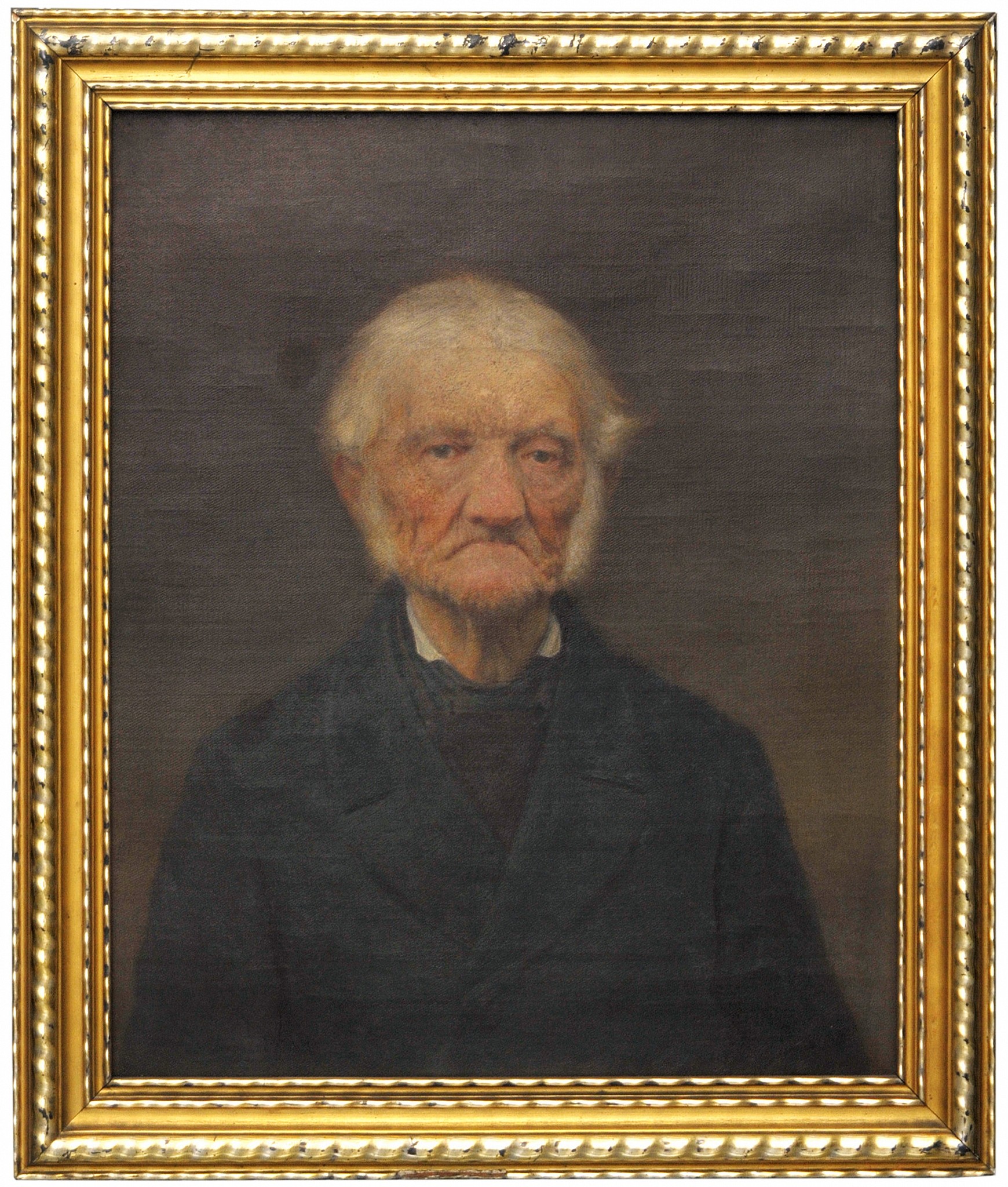 Portrait of a Jewish man end of 19th century, oil on canvas, appropriated by the Nazis during the Holocaust. © Museen der Stadt Regensburg.
Portrait of a Jewish man end of 19th century, oil on canvas, appropriated by the Nazis during the Holocaust. © Museen der Stadt Regensburg.These are the questions Lange will ask in the hopes that the answers she gets will offer an insight into German citizenry’s “private perception of the Holocaust” and the various ways people have grappled with that knowledge — and their consciences.
As a senior provenance researcher at the Office for Non-State Museums in Bavaria, Lange’s role is to ascertain the origin of all objects held in the 1,250 non-state museums.
She discerns, by examination of correspondence, archival documents, inventory logs dated 1933-1945 and consulting the 25,000 Gestapo files at the State Archive in Würzburg, whether they hold stolen Jewish goods. To date she has looked at the holdings of about 20 institutions.
Buried histories
As a little girl growing up during the 1980s in the city of Remscheid, northern Germany, Lange, her parents and brother shared a house with her maternal grandparents. Her grandfather had served in the German army during the Third Reich and she vividly remembers the indentations in his upper arm where he had been wounded by shrapnel.
At the age of 12, Lange learned about the Holocaust at school and started asking her grandparents what they had known about the fate of their former Jewish neighbors. Her grandmother recalled seeing a man the morning after the Kristallnacht pogrom sweeping up broken glass outside his shop, wearing his WWI Iron Cross.
Other than that one story, Lange’s grandparents steadfastly claimed to have known “nothing, nothing at all until the end of the war.” But, Lange said, “I never truly believed them.”
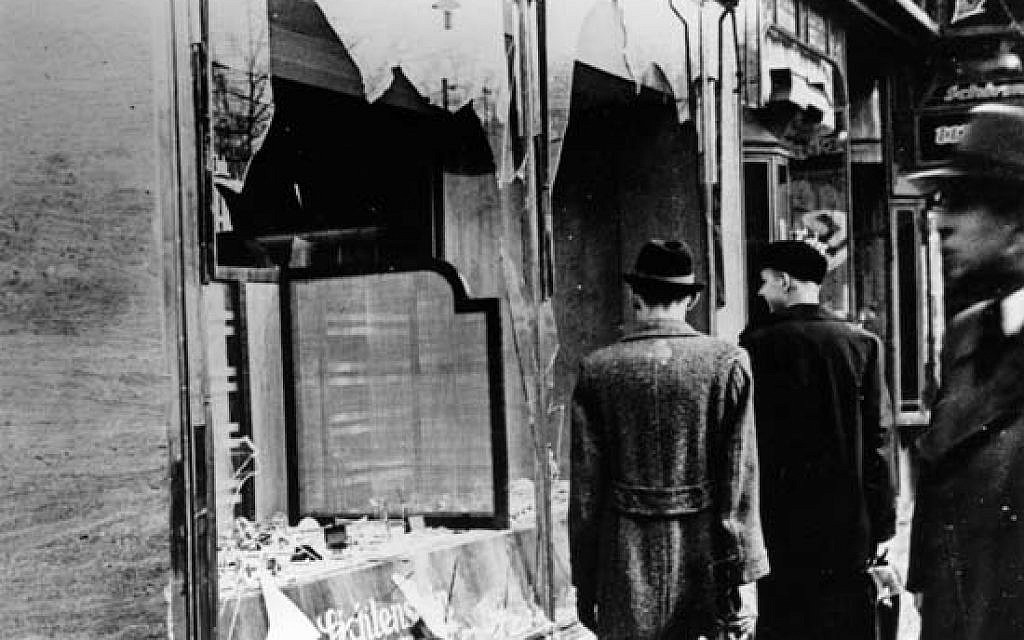
Lange’s interest in provenance research began in earnest about eight years ago when a fellow doctoral student told her the story of how her grandmother had given her a pretty lace tablecloth which, she claimed, her Jewish neighbor had “dropped off right before she was deported.”
Her friend felt it was not right to use the tablecloth because she doubted it had been voluntarily given, but neither did it feel moral to throw it away.
As Lange explained, “my friend felt paralyzed, incapable of taking the right decision about what to do.”
“I remember talking about my friend’s emotional conflict. She didn’t know — and nor did I — what she should do. Using it seemed disgusting, throwing it out seemed cruel. I always thought back to that dilemma and I guess now I’m really going to tackle it,” said Lange.
Under the Third Reich, thousands of public auctions were held, several times a week, all over Germany where once Jewish-owned goods were openly sold to a public only too willing to buy it on the cheap. Upcoming auctions were widely announced with newspaper advertisements for “former Jewish owned assets” and posters displayed on site.
The Gestapo as well as the local councils’ paperwork charting this wholesale dispossession still exists, including detailed inventories with the names of buyers and the prices they paid.
From October 15, 1941, Jews were forbidden to sell or give away their property. Anyone wishing to raise money by selling their household goods had to apply for permission to the Reich Association of Jews in Germany (Reichsvereinigung der Juden in Deutschland) and they, in turn, would file a request to the Gestapo.
But by then the deportations were well underway and there was often only a few days between the application by Jews to sell their household items and their “evacuation” to the East. The Nazi bureaucracy was firmly in place to handle everything left behind — an exploitation referred to by the code name “Aktion III.”
Paperwork reveals the mundane nature of so much of what was on sale. Lange has lists of the household goods available for purchase: bedding, curtains, towels, pots and pans, crockery, cutlery, tablecloths, jewelry, umbrellas, paintings, baby carriages, clothing, underwear and even marinated cherries. All these everyday items were snapped up and disappeared into German households — which is where they remain.
Unknown legacies
The auction protocols marked the end of the illegitimate transaction, but the objects’ afterlife in non-Jewish households was only just starting and probably continues to this day, handed down from generation to generation.
Some buyers paid in cash, and often these transactions disappeared into oblivion, with no documentation to chart where they went and who bought them. But there are also many cases where the paperwork still exists, detailing the names and addresses of people and what objects they bought at auction — though once they took their purchases home, they could no longer be held accountable for how they treated these new belongings. It is, therefore, much easier to find Jewish property held in public collections.
Such is the case with the objects acquired under Aktion III by the Regensburg Museum of History (Regensburg Historische Museum) in the south eastern German state of Bavaria.
In this instance, the paperwork confirms the details of what occurred.
On September 23, 1942, the third and final deportation of 117 Jews of Ragensburg to Theresienstadt took place. An invoice from the financial office of Regensburg dated December 19 was paid on January 8, 1943. The museum acquired some umbrellas and two oil on canvas paintings of an unnamed Jewish couple.

These items have never been shown in public and simply disappeared into storage alongside all the other objects the museum bought under normal circumstances.
“Needless to say they are different to the other objects we keep. There is a lot of respect, and of course I feel a deep sense of responsibility for the stories of the people who got deported. We want to do anything to keep their memory alive,” says Maria Lang, Scientific Assistant for Provenance Research at the Museums of the City of Regensburg.
But why has the museum never exhibited these objects over the past 75 years? Lang and her colleagues struggle with conflicting emotions on this question.
“It would be a good idea to display them, but on the other hand I think it kind of like we would perhaps like to whitewash our conscience in showing these objects, so I think there are two different sides,” Lang said.
That these items hold a unique place in the hearts of the museum staff is clear.
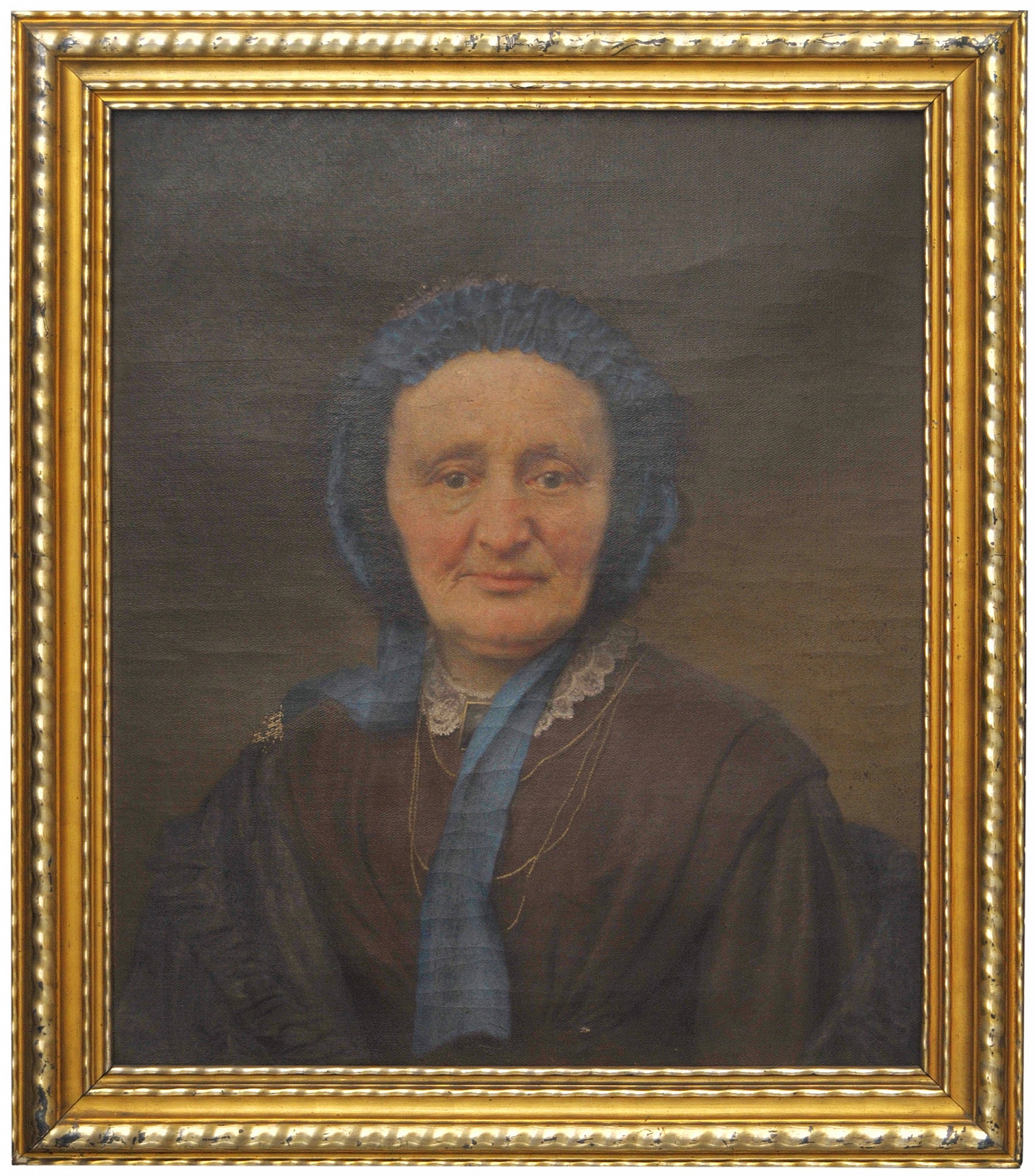
“They are kept in the depot together with our other objects. At the first view there is nothing special about them, but, of course, there is the extraordinary history they tell,” she said.
“I feel emotionally affected,” said Regensburg’s Lang. “Saying this, I am thinking in particular of the fate of the former owners. We should therefore treat these objects with the utmost care while being aware of our responsibility for the families to which the portraits belonged. And of course, I want to figure out as much as possible about them. I want to find out who they belonged to in order to share their story.”
Will these hands never be clean?
So, if people had all these objects — and yet felt unable to use them — what does that signify about how much they really knew about the fate of their previous owners?
Researcher Carolin Lange has encountered people who bought items at auction in 1942 or 1943, used them until the end of the war, and then felt too guilty to continue. Often family members passed them on to the next generation with a certain narrative, which may have been false or, at the very least, less than wholly truthful in an attempt to distance themselves from precisely how they acquired them.
She has high hopes of finding many participants for her study because “local city museums have a strong regional focus, so it is much likelier to find objects which belonged to locals who had been deported and whose assets were sold at auction.”
“If someone has the pots, pans, bedding of people murdered by the Nazis in death camps, how do they sleep or cook their dinner using them knowing the fate of the previous owners? That’s the answer I’m seeking,” Lange said.
Dina Gold is the author of “Stolen Legacy: Nazi Theft and the Quest for Justice at Krausenstrasse 17/18, Berlin.”


